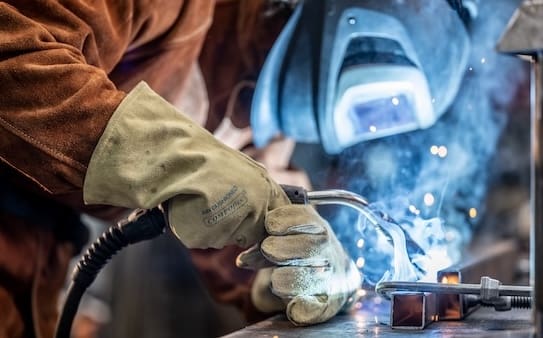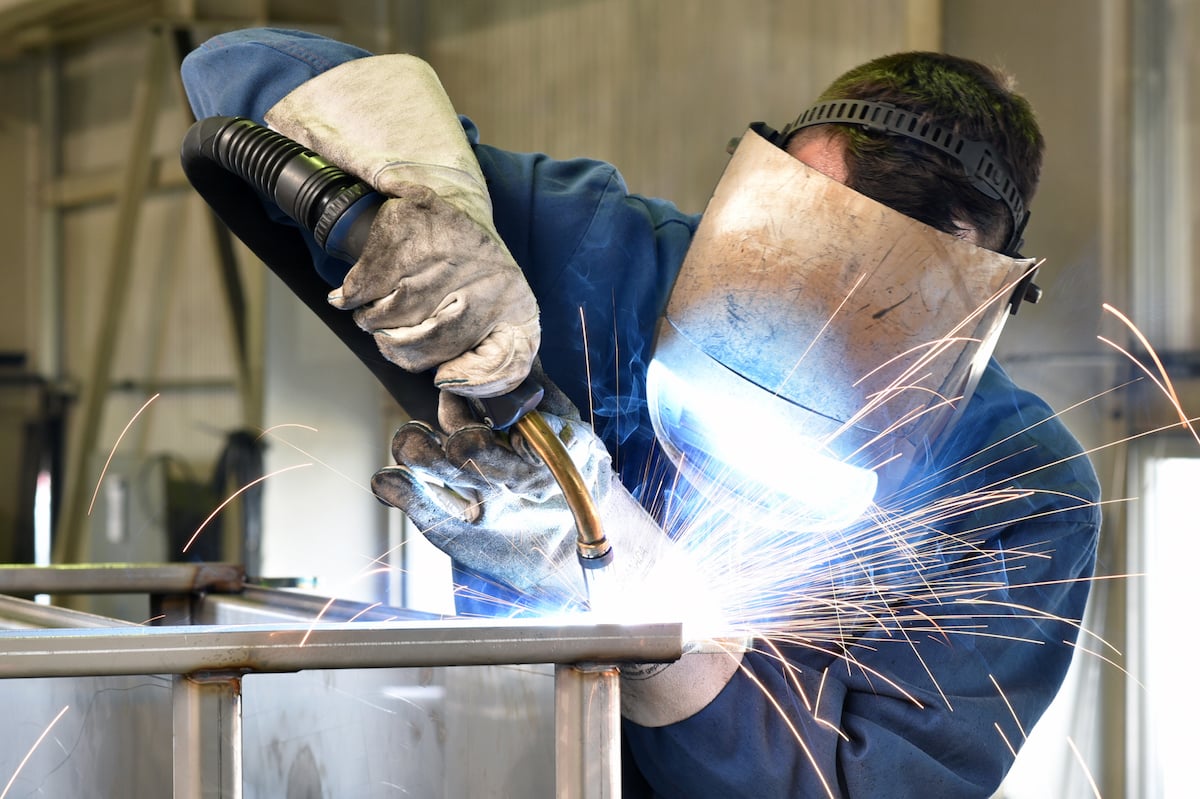Common Welding Repair Service Issues and Exactly How to Address Them Properly
Welding repair services commonly come across a series of issues that can threaten the honesty of the end product. Common issues include poor infiltration, porosity, and misalignment, to name a few. Each flaw provides unique difficulties that call for details methods for resolution. Comprehending these issues is vital for welders intending to improve their skills and outcomes. This conversation will certainly discover these usual welding fixing concerns and efficient methods to resolve them.
Insufficient Infiltration
Poor penetration takes place when the weld metal falls short to totally fuse with the base material, leading to weak joints and prospective structural failings. This problem usually originates from inadequate warmth input, wrong electrode angle, or inappropriate welding rate. Welders may run into inadequate infiltration due to a mistake of the needed specifications for a certain material thickness or type. Additionally, contamination on the base material's surface area can hinder reliable bonding, intensifying the trouble. To deal with inadequate infiltration, welders must guarantee suitable setups on their tools and maintain a tidy job surface. Regular assessment of welds is suggested to determine any shortages early, enabling for prompt adjustments and the avoidance of endangered architectural integrity in welded assemblies.
Porosity
Porosity is a common problem in welded joints that materializes as little gas bubbles entraped within the weld steel. This defect can endanger the integrity of the weld, leading to minimized stamina and possible failing under tension. Belgrade Welding. Porosity usually develops from contamination, moisture, or improper welding methods, which permit gases to get away into the molten weld pool. To deal with porosity, welders ought to guarantee proper surface preparation, keep a clean working setting, and utilize ideal welding criteria. Additionally, selecting the ideal filler material and protecting gas can minimize gas entrapment. Regular assessment and testing of welds can assist determine porosity early, ensuring timely corrective actions are taken, thus protecting the quality and integrity of the bonded structure
Misalignment
Misalignment in welding can emerge from different factors, including inappropriate configuration and thermal development. Recognizing the origin causes is necessary for effective resolution. Several modification strategies are available to realign components and assure architectural integrity.
Reasons for Misalignment
Welding imbalance commonly comes from a selection of underlying concerns that can compromise architectural integrity. One key reason is inappropriate fit-up of elements before welding, which can lead to spaces and uneven surface areas. Variations in thermal growth during the welding procedure can likewise lead to distortion, specifically if the products being signed up with have different coefficients of growth. Additionally, insufficient clamping and fixturing might stop working to hold components securely in position, resulting in activity during welding. Poorly conserved devices, including welding equipments and devices, might present inconsistencies in the weld grain, further contributing to misalignment. Finally, driver mistake, coming from not enough training or experience, can also play a significant duty in producing misaligned welds.
Modification Methods Readily Available
Resolving misalignment successfully requires a combination of corrective techniques tailored to the certain problems at hand. One common method is making use of fixtures or jigs to hold parts in the proper setting throughout welding, ensuring consistent placement. Additionally, pre-heating the products can help in reducing distortion and enhance fit-up. For significant misalignment, mechanical adjustment techniques, such as making use of hydraulic jacks or clamps, can be employed to correct the placement before welding. Post-weld warmth treatment might additionally be necessary to relieve stresses triggered by misalignment. Careful inspection and adjustment throughout the setup phase can prevent imbalance problems from becoming significant problems, promoting a smoother welding procedure and enhancing total structural honesty.
Distortion
Distortion is a common obstacle in welding that can develop from various factors, including unequal heating & cooling. Recognizing the sources of distortion is vital for implementing effective avoidance methods. Resolving this problem not just boosts architectural honesty yet additionally enhances the overall top quality of the weld.
Root causes of Distortion
When subjected to the intense warmth of welding, products typically go through modifications that can bring about distortion. This sensation primarily arises from thermal development and tightening throughout the welding procedure. As the weld location warms up, the material increases; upon air conditioning, it contracts, which can create inner stresses. Furthermore, unequal heating across a workpiece can aggravate these tensions, leading to warping or bending. The sort of material likewise plays a substantial function; steels with varying thermal conductivity and coefficients of growth might respond differently, bring about unforeseeable distortions. Inadequate joint style and inadequate fixturing can add to misalignment throughout welding, enhancing the likelihood of distortion. Understanding these reasons is crucial for effective welding fixing and avoidance strategies.
Prevention Techniques
Reliable prevention methods for distortion throughout welding concentrate on regulating heat input and making certain proper joint layout. Maintaining a regular warmth input assists to reduce thermal development and tightening, which can lead to distortion. Utilizing methods such as preheating the work surface can likewise lower the temperature level gradient, promoting consistent heating. Furthermore, selecting proper joint designs, such as T-joints or lap joints, can enhance stability and minimize stress and anxiety focus. read review Executing proper fixturing to safeguard the workpieces in position additionally aids in maintaining placement during the welding procedure. Staggered welding series can distribute warm much more uniformly, preventing local distortion. By using these techniques, welders can considerably reduce the chance of distortion and boost the overall high quality of their welds.
Breaking
Cracking is a typical problem come across in welding repair work, frequently arising from different factors such as improper air conditioning prices, product choice, or inadequate joint preparation. The occurrence of splits can greatly compromise the stability of the weld, bring about potential failings during procedure. To address this concern, welders need to initially examine the source, making certain that products are suitable and properly selected for the specific application. Additionally, managing the air conditioning price throughout the welding procedure is vital; quick air conditioning can induce tension and lead to breaking. Correct joint design and preparation also add to lessening the danger. Executing these approaches can improve weld high quality and sturdiness, eventually reducing the likelihood of splitting in ended up weldments.

Insufficient Blend
A significant concern in welding fixings is insufficient blend, which occurs when the weld metal does not sufficiently bond with the base product or previous weld passes - Belgrade Welding. This problem can cause weak points in the joint, potentially jeopardizing the stability of the welded structure. Aspects adding to incomplete blend include not enough warmth input, incorrect welding method, and contamination of the surfaces being signed up with. To address this concern effectively, welders ought to guarantee correct pre-weld cleaning and surface area preparation, as well as adjust their welding criteria to achieve appropriate penetration and combination. Normal inspection throughout the welding process can likewise help determine insufficient fusion early, enabling for prompt corrective steps to boost the general high quality click for source of the weld
Overheating
While welding repairs can improve architectural stability, overheating provides a substantial challenge that can bring about material deterioration. Extreme warm throughout welding can alter the mechanical properties of steels, leading to reduced stamina, enhanced brittleness, and bending. This phenomenon is especially crucial in high-stress applications where architectural integrity is extremely important. Identifying overheating can involve visual assessments for staining or distortion, in addition to monitoring temperature during the welding process. To mitigate the threats connected with overheating, welders ought to utilize appropriate techniques, such as controlling warmth input, changing traveling rate, and making use of suitable filler materials. In addition, applying pre- and post-weld warm treatments can assist recover product properties and enhance the total quality of the repair work, making certain lasting performance and security.
Often Asked Questions
What Are the Typical Signs of a Welding Flaw?

Just How Can I Evaluate My Welds for Quality?
To examine welds for high quality, one can utilize aesthetic assessments, ultrasonic screening, and radiographic approaches. Each technique ensures architectural integrity, identifies problems, and confirms adherence to defined standards, inevitably boosting the integrity of the bonded joints.
What Safety and security Safety Measures Should I Take While Welding?
When welding, one should prioritize safety and security by wearing suitable individual protective tools, ensuring proper ventilation, safeguarding combustible products away, preserving a clean work space, and being aware of surroundings to prevent mishaps and injuries.
Can I Fix a Weld Without Redesigning the Entire Joint?
Repairing a weld without redoing the entire joint is feasible, depending upon the damages (Belgrade). Methods such as grinding, adding filler material, or utilizing a welding process can properly attend to particular flaws while maintaining the surrounding framework
What Equipment Are Vital for Effective Welding Repairs?
Crucial devices for efficient welding repair services consist of a welding maker, wire brush, mill, safety gear, clamps, and filler materials. Each device plays an essential function in ensuring high quality and security during the repair work procedure. Porosity commonly arises from contamination, stick welding aluminum dampness, or inappropriate welding strategies, which enable gases to run away into the liquified weld swimming pool. Poorly maintained tools, consisting of welding makers and tools, might introduce disparities in the weld grain, further contributing to imbalance. When subjected to the extreme warm of welding, products often go through changes that can lead to distortion. Splitting is a common issue come across in welding repair work, typically resulting from numerous elements such as inappropriate air conditioning rates, product option, or inadequate joint preparation. A substantial concern in welding repair work is insufficient blend, which occurs when the weld steel does not effectively bond with the base product or previous weld passes.